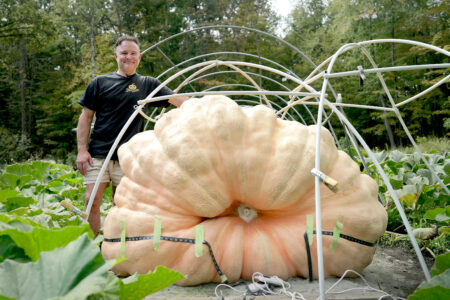Here’s To The Pie Makers
Pie dough resists control. It doesn’t want to be touched. But nobody ever tells you that.
Every recipes on earth says, “Add this and that to a bowl…pea size bits of butter…floury surface…rolling pin.” But what they need to add to these recipes is a discussion about the cantankerous nature of dough itself.
Pie dough is about feel not formula. You can’t just follow directions and expect perfection. “It demands a kind of surrender,” I read somewhere, but what does that mean exactly? I not only surrender to it, I beg it. I promise compliments. I try to show it I know what I’m doing, thinking it will respect me more. (It always works with a horse. Why not a ball of dough?)
This week, I made a good pie dough. I could tell it was thinking briefly of cooperating. It had the right stuff–expensive butter, ice water, organic flour, and a really enthusiastic baker. I wrapped it in cellophane and refrigerated it for more than an hour before daring to ask it to fulfill its purpose. It was the best dough I’ve ever made.
But I don’t yet have the feel for it, you see. There’s a way the dough has got to feel when you roll it out. I was watching an expert rolling his dough out on YouTube and it was so perfect–no cracks or dryness along the edges. He was moving it around like it was a pizza dough, just picking it up from the table and throwing it onto the pie plate with the confidence of a baker at a king’s coronation. Doesn’t he understand that dough doesn’t do that for just anybody?
Edna Lewis understood all of this better than anyone. Long before she was called the Grand Dame of Southern Cooking, she was a girl in Freetown, Virginia — a small farming community founded by freed slaves — watching her mother and aunts make pies in the cool hush of early morning. They didn’t have air conditioning, so the crust had to be mixed before the sun got too high. The butter was cut by hand, the flour sifted with patience, and no one rushed.
Decades later, after she became a celebrated chef in New York, she still made her pies that way: quietly, deliberately, as if summoning memory. In The Taste of Country Cooking, she wrote that good pie dough “can’t be hurried.” It needed a cool room, calm hands, and time — the same ingredients that seem to have vanished from modern life.
Her students wanted exactness: how many tablespoons of water, how long to chill the butter. But she taught by feel. She’d press a bit of dough between her fingers and say, “You’ll know.” And that was maddening — but also the point. Pie dough, like life, can’t be mastered by measurement. It’s learned through doing, failing, trying again.
Lewis said she liked to bake when the world was still. Before the kitchen filled with noise and talk and heat. Because in that quiet, the dough would “come together kindly.” That’s what she called it — kindly. As if even the flour and butter had moods.
At that’s my problem; I just don’t have that feel, that touch. Plus, I’m terrified of my pie dough and that’s why my pies come out looking scary. Even if you get the dough right, I never roll it out properly and it comes out short on my pie plate.
The truth is, rolling out dough is the true test of humility. You start out hopeful — a disc of chilled promise — and within minutes it’s sticking, tearing, shrinking back on itself like it’s mocking you. You dust more flour, roll again, curse softly, and remind yourself not to press too hard. The dough wants gentleness. It wants to be coaxed, not conquered.
The trick, of course, is temperature and touch. Too cold, and it cracks. Too warm, and the butter melts into the flour and robs you of that layered flake. Rolling dough is like conversation — you have to stay tuned to what it’s telling you. Ignore the cues and it goes radio silent.
This is where so many people give up. But it’s also where the pie teaches you something about letting go of control and finding rhythm in imperfection. You roll, you patch, you try again. And sometimes, miraculously, it rolls out smooth — like forgiveness.
I’m just not there yet. And it’s hard to practice; I don’t have anyone to make pies for anymore. I can’t make seven pies a week for just the two of us.
Anyway, I’ve got a pie cooling on my porch like a real grandma. It’s not very pretty, but that’s what whipped cream is for.



